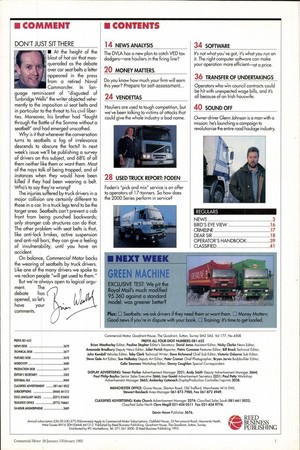DON'T JUST SIT THERE • At the height of the
Page 3

If you've noticed an error in this article please click here to report it so we can fix it.
blast of hot air that masqueraded as the debate over car seat belts a letter appeared in the press from a retired Naval Commander. In language reminiscent of "disgusted of Tunbridge Wells" the writer objected vehemently to the imposition or seat belts and in particular to the threat to his civil liberties. Moreover, his brother had "fought through the Battle of the Somme without a seatbelt" and had emerged unscathed.
Why is it that whenever the conversation turns to seatbelts a fog of irrelevance descends to obscure the facts? In next week's issue we'll be publishing a survey of drivers on this subject, and 68% of all them neither like them or want them. Most of the nays talk of being trapped, and of instances when they would have been killed if they had been wearing a belt. Who's to say they're wrong? The injuries suffered by truck drivers in a major collision are certainly different to those in a car. In a truck legs tend to be the target area. Seatbelts can't prevent a cab front from being punched backwards; only stronger cab structures can do that. The other problem with seat belts is that, like anti-lock brakes, active suspension and anti-roll bars, they can give a feeling of invulnerability, until you have an accident.
On balance, Commercial Motor backs the wearing of seatbelts by truck drivers. Like one of the many drivers we spoke to we reckon people "will get used to them."
But we're always open to logical argu ment. The debate has opened, so let's have your comments.












































































